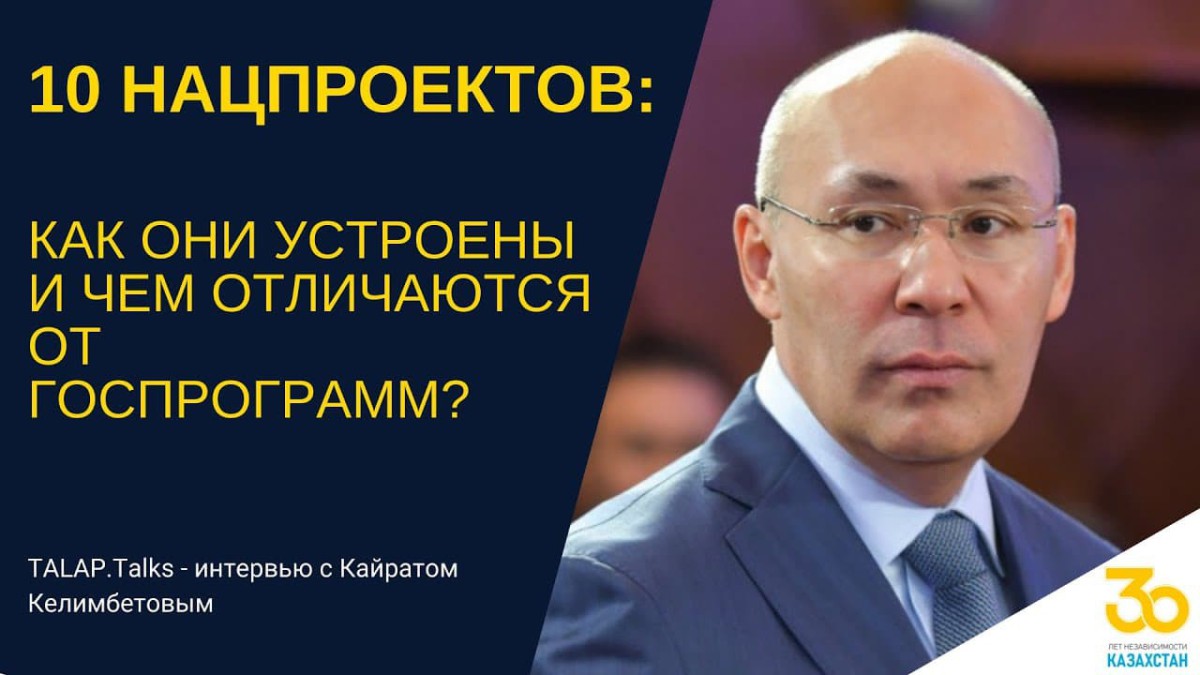The global stock market remains volatile. If everything a year ago could be attributed to the COVID-19 pandemic and, as a result, a slowdown in technological development, the current roller coaster was primarily due to geopolitics. And, while the world’s largest stock exchanges work to stabilise volatile stock quotes, the regional stock market continues to grow.
Following a lull in 2019-2021, the Kazakh IPO market has reopened. The speech of Kazakhstan’s President Kassym-Jomart Tokayev, in which he called the IPO of domestic national companies a priority task for the state, signalled the beginning of the process. The President focused on developing the population’s investment culture and making IPOs available to all Kazakhstanis. This can only be accomplished by implementing new digital solutions that eliminate paperwork and bureaucracy.
Already in December 2022, Kazakhstan’s largest oil and gas company, KazMunayGas, went public, becoming not only the largest on the Kazakhstani stock exchange, but also the first “digital” IPO in Kazakhstan: 99% of share purchase applications were submitted online. Analysts at finreview.kz discuss how the domestic IPO market is evolving and what opportunities lie ahead.
41 billion KZT of investments, 76 thousand investors: recalling the first IPOs of Kazakhstan
The history of Kazakh IPOs began a little more than ten years ago.
The “pioneer” was the large oil pipeline company KazTransOil, which transports raw materials to domestic and international markets. It listed 10% of its shares on the Kazakhstan Stock Exchange in 2012 (KASE). Kazakhstanis were offered 725 KZT per security to purchase more than 38 million shares of the company. Investors recognised that as long as there was oil in the country and oil products were produced, there would be a constant demand for the company’s services. More than 34,000 applications were received, totalling more than 59.4 billion KZT. Following an examination of the applications received, it was decided to grant them in the amount of 27.9 billion KZT. Almaty and Almaty region residents were the most active, purchasing 52.98% of the shares. The residents of Astana came in second, with 14.35% of the shares purchased – nearly 3.7 times less than the residents of Almaty.
KazTransOil’s IPO success in 2014 was replicated by Kazakh power grid management company KEGOC, which also issued 10% of its shares to the market at 505 KZT per share. The total number of applications received was nearly 42 thousand units for a total of 16.7 billion KZT.
More than 41 billion KZT was raised as a result of the two companies’ initial public offerings. Over 76 thousand people have become investors. Interestingly, one application accounted for up to 200 thousand KZT on average. This suggests that Kazakhstanis with limited financial resources were the most interested in purchasing stock. However, it produced positive results. For example, KazTransOil’s dividend income exceeded 25% of the cost of acquiring shares from the time of their placement.
There have been other successful Kazakh IPOs. The value of Kazatomprom’s shares increased by 383% in 2018 as a result of its listing on the Astana International Exchange (AIX), the AIFC exchange, and the subsequent two SPOs. The dual placement of KASPI shares on AIX and the London Stock Exchange produced a positive result as well: the maximum increase in the value of its shares was 252%.
Will the KazMunayGas IPO be as successful?
Investors submitted 129 thousand applications for the purchase of KMG shares, totalling 181 billion KZT, according to the NWF Samruk-Kazyna JSC. Based on the analysis of the applications received, it was decided to satisfy applications totalling more than 153 billion KZT. The distinction is simple: applications were not fully approved in order to prevent the concentration of significant stakes in individual large investors. However, foreign investors purchased KMG shares worth 6.6 billion KZT, which bodes well for the AIFC’s work.
Despite the massive amount of funds attracted for the Kazakh stock market, demand for KazMunayGas shares in the IPO was 60% of the offer, or 40% less than expected. Instead of the planned 30.5 million shares, the state fund Samruk-Kazyna only sold 18.3 million, or 3% of the planned 5%. In comparison, KazTransOil and KEGOC sold 10% and Kaspi 15% of their shares, which is usually considered the minimum amount to ensure sufficient liquidity of the shares in the market following the IPO. Despite the fact that demand for shares was higher in previous years, it is worth noting the volume of stock market placements: KazTransOil raised 27.9 billion KZT, KEGOC – 13.1 billion KZT, and KazMunayGas – 153 billion KZT.
As an example, when Saudi Aramco, one of the world’s largest oil companies in terms of oil production and reserves (accounting for approximately 12% of global oil reserves, 10% of production, and 14% of exports), went public, only 1.5% of the shares were sold. The IPO valued the company at a record 1.7 trillion USD, so the placement was massive. In Kazakhstan, the situation is similar: no company has ever gone public with a market capitalisation of more than 11 billion USD. The total assets of KMG exceed 35 billion USD.
There is one more distinction between this IPO and previous ones. Prime Minister Alikhan Smailov stated at the opening ceremony of trading in shares of NC KazMunayGas JSC on the AIX exchange that the IPO of this leading national company is being carried out as part of the reform to further denationalise the economy. “This is a step toward building an open and efficient economy,” he said. Is it possible, however, to consider the release of only 5% of KMG shares to the stock market (with an actual buy-out of only 3%) as denationalisation?
Perhaps KazMunayGas’ successful start will be extended with a secondary placement of shares – SPO. Meanwhile, all proceeds from the IPO will be transferred to the Kazakhstan National Fund.
6 thousand applications with a total amount of 1.05 billion KZT: what is the peculiarity of direct subscription through the Tabys and Kazpost applications?
The national company’s shares were listed on two domestic exchanges at the same time: the Astana International Exchange (AIX) and the Kazakhstan Stock Exchange (KASE).
The AIX exchange introduced a direct subscription tool – through the Tabys mobile application and more than 1,000 Kazpost offices throughout Kazakhstan – specifically for the IPO of KazMunayGas.
Tabys is a mobile application developed by AIX in 2020 to increase Kazakh citizens’ access to the stock market. Structured securities can be purchased for as little as 1,000 KZT. On the eve of the IPO, the AIFC exchange expanded the application’s functionality with a direct subscription. Previously, this tool was only used abroad to allow as many citizens as possible to participate in the IPO. Furthermore, because of the integration with Kazpost, Kazakhstanis can leave an application for KMG shares in automated branches across the country. Investors applied for shares directly to the seller of shares, Samruk-Kazyna Fund, as part of a direct subscription, which greatly simplified and accelerated the process. Residents of the most remote settlements, where there are no brokerage company representatives, were able to participate in the IPO as a result of this. The direct subscription geography encompasses the entire country of Kazakhstan. Residents of settlements that are not even marked on administrative maps are among the investors.
Direct subscription via Tabys and Kazpost proved to be a popular and in-demand tool. Approximately 6,000 applications were submitted in this manner for a total of 1 billion 50 million KZT, with the largest application amounting to nearly 19 million KZT. This is a fantastic indicator demonstrating the enormous potential of innovative tools and retail investment in Kazakhstan as a whole. There was also a significant increase in novice investors (approximately 6,000) in Tabys, for whom this IPO was their first foray into independent investing. Women, by the way, actively participated in the IPO, accounting for 48% of applications submitted to Tabys. Only 30% of women had invested in the app a few months ago.
Older people preferred to subscribe directly at Kazpost offices. A 91-year-old man from Kyzylorda and an 81-year-old woman from Atyrau hold the age records.
Furthermore, direct subscription provided an opportunity for Kazakhstanis who are accustomed to leaving everything until the last minute. For technical reasons, most brokers closed application acceptance a few hours before the deadline, whereas applications for direct subscription in Tabys and Kazpost were accepted until the last minute.
The IPO of KazMunayGas has taken place. What’s next?
Those who participated in KazMunayGas People’s IPO have two options for the future: keep the shares in their investment portfolio for a long time and receive dividends or sell them and wait for the share price to rise. Shares of the company can be purchased on the secondary market – through the company’s own broker.
According to KMG, if oil prices remain at or above 70 USD per barrel, annual dividends to shareholders will total at least 200 billion KZT. Payments will be made over a three-year period. And this can be a useful contribution for Kazakhstanis, who are not particularly spoiled by the exchange portfolio’s diversity and the presence of “blue chips” in the country. Furthermore, the stock market’s interest in “black gold” is not waning, and this is unlikely to change in the near future. The situation is exacerbated by anti-Russian sanctions and the imposition of a price ceiling for Russian Federation oil, the delay of tankers carrying Kazakh oil in Turkish waters, the conflict between the US and OPEC+, strict anti-COVID restrictions in China, and numerous other factors.
The current IPO’s main advantage was its digitalisation, as 99% of applications for the purchase of shares were submitted online. Buying stocks has become much easier, and transaction costs have dropped significantly. For example, during the first wave of IPOs (2012-2014), people spent money to apply for the purchase of multiple shares: they certified the required documents at a notary, and brokers charged a high commission. This process is now much cheaper and easier thanks to digital tools. Many Kazakhstanis bought 1-2 shares, and processing applications in digital form is much faster than in the past.
Which national company will be the next to go public? In addition to KMG, Air Astana, Kazakhstan Temir Zholy, Kazpost, Tau-Ken Samruk, and Samruk-Energo planned to list their shares on the stock exchange in 2022-2023. The IPO of KazMunayGas demonstrated the Kazakhstani securities market’s high potential, as well as a significant increase in investment literacy and activity among Kazakhstanis. And this bodes well for the continued implementation of a comprehensive privatisation plan and the transfer of a number of the fund’s portfolio companies to a competitive environment via IPO mechanisms.



















